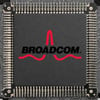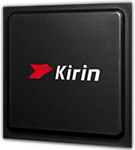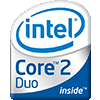
Raspberry Pi 4 B (Broadcom BCM2711) Benchmark, Test and specs
Last updated:
The Raspberry Pi 4 B (Broadcom BCM2711) has 4 cores with 4 threads and is based on the 4. gen of the Broadcom BCM series. The processor was released in 06/2019. The Raspberry Pi 4 B (Broadcom BCM2711) scores 202 points in the Geekbench 5 single-core benchmark. In the Geekbench 5 multi-core benchmark, the result is 601 points.
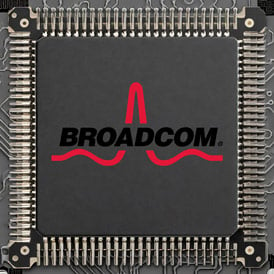
| Name: | Raspberry Pi 4 B (Broadcom BCM2711) |
|---|---|
| Family: | Broadcom BCM (3) |
| CPU group: | Broadcom BCM2711 (1) |
| Architecture: | Cortex-A72 |
| Segment: | Desktop / Server |
| Generation: | 4 |
| Predecessor: | Raspberry Pi 3 B+ (Broadcom BCM2837B0) |
| Successor: | Raspberry Pi 5 B (Broadcom BCM2712) |
CPU Cores and Base Frequency
The Raspberry Pi 4 B (Broadcom BCM2711) has 4 CPU cores and can calculate 4 threads in parallel. The clock frequency of the Raspberry Pi 4 B (Broadcom BCM2711) is 1.50 GHz. The number of CPU cores greatly affects the speed of the processor and is an important performance indicator.
| CPU Cores / Threads: | 4 / 4 |
|---|---|
| Core architecture: | normal |
| Cores: | 4x Cortex-A72 |
| Hyperthreading / SMT: | No |
|---|---|
| Overclocking: | Yes |
| Frequency: | 1.50 GHz |
| Turbo Frequency (1 Core): | -- |
| Turbo Frequency (4 Cores): | -- |
Internal Graphics
The Raspberry Pi 4 B (Broadcom BCM2711) has integrated graphics, called iGPU for short. Specifically, the Raspberry Pi 4 B (Broadcom BCM2711) uses the Broadcom VideoCore VI, which has 64 texture shaders and 4 execution units. The iGPU uses the system's main memory as graphics memory and sits on the processor's die.
| GPU name: | Broadcom VideoCore VI |
|---|---|
| GPU frequency: | 0.50 GHz |
| GPU (Turbo): | No turbo |
| Compute units: | 4 |
| Shader: | 64 |
| Hardware Raytracing: | No |
| Release date: | Q2/2019 |
| Max. displays: | 2 |
|---|---|
| Generation: | 6 |
| Direct X: | -- |
| Technology: | 28 nm |
| Max. GPU Memory: | 2 GB |
| Frame Generation: | No |
Hardware codec support
A photo or video codec that is accelerated in hardware can greatly accelerate the working speed of a processor and extend the battery life of notebooks or smartphones when playing videos.
| h265 / HEVC (8 bit): | Decode |
|---|---|
| h265 / HEVC (10 bit): | Decode |
| h264: | Decode / Encode |
| VP8: | Decode |
| VP9: | Decode |
| AV1: | No |
|---|---|
| AVC: | Decode |
| VC-1: | Decode |
| JPEG: | Decode / Encode |
Memory & PCIeThe processor can use up to 8 GB memory in 1 (Single Channel) memory channels. The maximum memory bandwidth is 12.8 GB/s. The memory type as well as the amount of memory can greatly affect the speed of the system. |
|
| Memory type: | Memory bandwidth: |
|---|---|
| LPDDR4-3200 | 12.8 GB/s |
| Max. Memory: | 8 GB |
| Memory channels: | 1 (Single Channel) |
| ECC: | No |
| PCIe: | |
| PCIe Bandwidth: | -- |
Thermal ManagementThe thermal design power (TDP for short) of the processor is 7.5 W. The TDP specifies the necessary cooling solution that is required to cool the processor sufficiently. The TDP usually gives a rough idea of the actual power consumption of the CPU. |
|
|---|---|
| TDP (PL1 / PBP): | 7.5 W |
| TDP (PL2): | -- |
| TDP up: | -- |
| TDP down: | 3 W |
| Tjunction max.: | -- |
Technical details
The Raspberry Pi 4 B (Broadcom BCM2711) is made in 28 nm. The smaller the manufacturing process of a CPU, the more modern and energy-efficient it is. Overall, the processor has 1.00 MB cache. A large cache can greatly speed up the processor's speed in some cases such as games.
| Technology: | 28 nm |
|---|---|
| Chip design: | Monolithic |
| Socket: | -- |
| L2-Cache: | 1.00 MB |
| L3-Cache: | -- |
| AES-NI: | No |
| Operating systems: | Windows 11 (ARM), Linux |
| Virtualization: | None |
|---|---|
| Instruction set (ISA): | Armv8-A (64 bit) |
| ISA extensions: | -- |
| Release date: | 06/2019 |
| Release price: | 35 $ |
| Part Number: | -- |
| Documents: | Technical data sheet |
Rate this processor
Benchmark results

The benchmark results for the Raspberry Pi 4 B (Broadcom BCM2711) have been carefully checked by us. We only publish benchmark results that have been created by us or that have been submitted by a visitor and then checked by a team member. All results are based on and fullfill our benchmark guidelines.
Geekbench 5, 64bit (Single-Core)
Geekbench 5 is a cross plattform benchmark that heavily uses the systems memory. A fast memory will push the result a lot. The single-core test only uses one CPU core, the amount of cores or hyperthreading ability doesn't count.
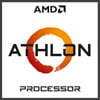
|
AMD Athlon 5150
4C 4T @ 1.60 GHz |
||

|
Intel Celeron 1019Y
2C 2T @ 1.00 GHz |
||

|
MediaTek Helio X20
10C 10T @ 2.10 GHz |
||
|
|
Raspberry Pi 4 B (Broadcom BCM2711)
4C 4T @ 1.50 GHz |
||
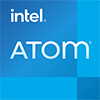
|
Intel Atom x5-Z8350
4C 4T @ 1.92 GHz |
||

|
Intel Celeron J1850
4C 4T @ 2.00 GHz |
||

|
Intel Atom x5-Z8330
4C 4T @ 1.92 GHz |
||
Geekbench 5, 64bit (Multi-Core)
Geekbench 5 is a cross plattform benchmark that heavily uses the systems memory. A fast memory will push the result a lot. The multi-core test involves all CPU cores and taks a big advantage of hyperthreading.

|
AMD Sempron 3850
4C 4T @ 1.30 GHz |
||
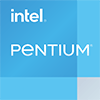
|
Intel Pentium T4500
2C 2T @ 2.30 GHz |
||

|
Intel Celeron E3300
2C 2T @ 2.50 GHz |
||
|
|
Raspberry Pi 4 B (Broadcom BCM2711)
4C 4T @ 1.50 GHz |
||

|
Intel Atom Z3745
4C 4T @ 1.33 GHz |
||

|
MediaTek MT6750
8C 8T @ 1.50 GHz |
||

|
Intel Pentium 997
2C 2T @ 1.60 GHz |
||
iGPU - FP32 Performance (Single-precision GFLOPS)
The theoretical computing performance of the internal graphics unit of the processor with simple accuracy (32 bit) in GFLOPS. GFLOPS indicates how many billion floating point operations the iGPU can perform per second.

|
MediaTek Helio A20
PowerVR GE8300 @ 0.55 GHz |
||

|
MediaTek MT8167A
PowerVR GE8300 @ 0.55 GHz |
||

|
Intel Atom E3825
Intel HD Graphics (Bay Trail GT1) @ 0.53 GHz |
||
|
|
Raspberry Pi 4 B (Broadcom BCM2711)
Broadcom VideoCore VI @ 0.50 GHz |
||
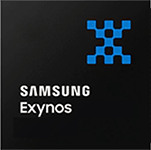
|
Samsung Exynos 7872
ARM Mali-G71 MP1 @ 0.95 GHz |
||
|
|
HiSilicon Kirin 910
ARM Mali-450 MP4 @ 0.53 GHz |
||
|
|
HiSilicon Kirin 620
ARM Mali-450 MP4 @ 0.53 GHz |
||
Benchmarks
Description of the processor
The Broadcom BCM2711 is soldered on the Raspberry Pi 4 B mainboard and has 4 CPU cores. The clock frequency is itself for ARM processors at low 1.5 GHz. By configuration file, the processor on the Raspberry Pi 4 B can be overclocked, with good cooling usually 1.7 - 1.8 GHz are possible. The CPU cores are based on the Cortex A72 design, the command set is ARMV8-A64 (64 bit).As an internal graphic, the SOC brings a Broadcom VideoCore VI with which has 4 execution units and 64 shaders. This is not suitable for games or other more demanding tasks, but should only take over the image or video output of the Raspberry Pi.
The Broadcom BCM2711 SOC is manufactured in an older 28 nm manufacturing and can therefore only be operated with relatively low clock frequencies before the SOC is heavily heated. Modern video codecs as well as H.265 / HEVC can decode the Raspberry Pi 4 b by hardware and usually play reasonably fluid. Therefore, it is also suitable with restrictions as a media player, at least when the 1080p resolution is sufficient. 4K contents can also be played in part also liquid, but this does not apply to all 4K content.
The Raspberry Pi 4 B can be purchased at 1.2.4 or 8 GB LPDDR4-2400 memory, with only one memory channel being used. The memory bandwidth is accordingly not very high. The Broadcom BCM2711 comes with a TDP of 7.5 watts, but can also be operated with less energy (and then with less power). The SOC has a 1 MB Level 2 cache.
For a price from current from 35 euros (1 GB version) to 75 euros (8 GB version), the Raspberry Pi 4 B is a good entry-level solution and a significant upgrade to the predecessor model. Smaller network solutions Like a small NAS, e.g. Ideal with the Raspberry Pi 4 B can be realized.
Popular comparisons
back to index



